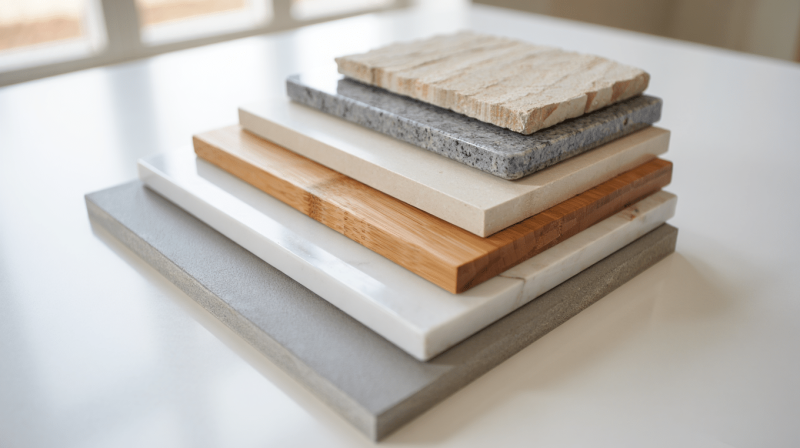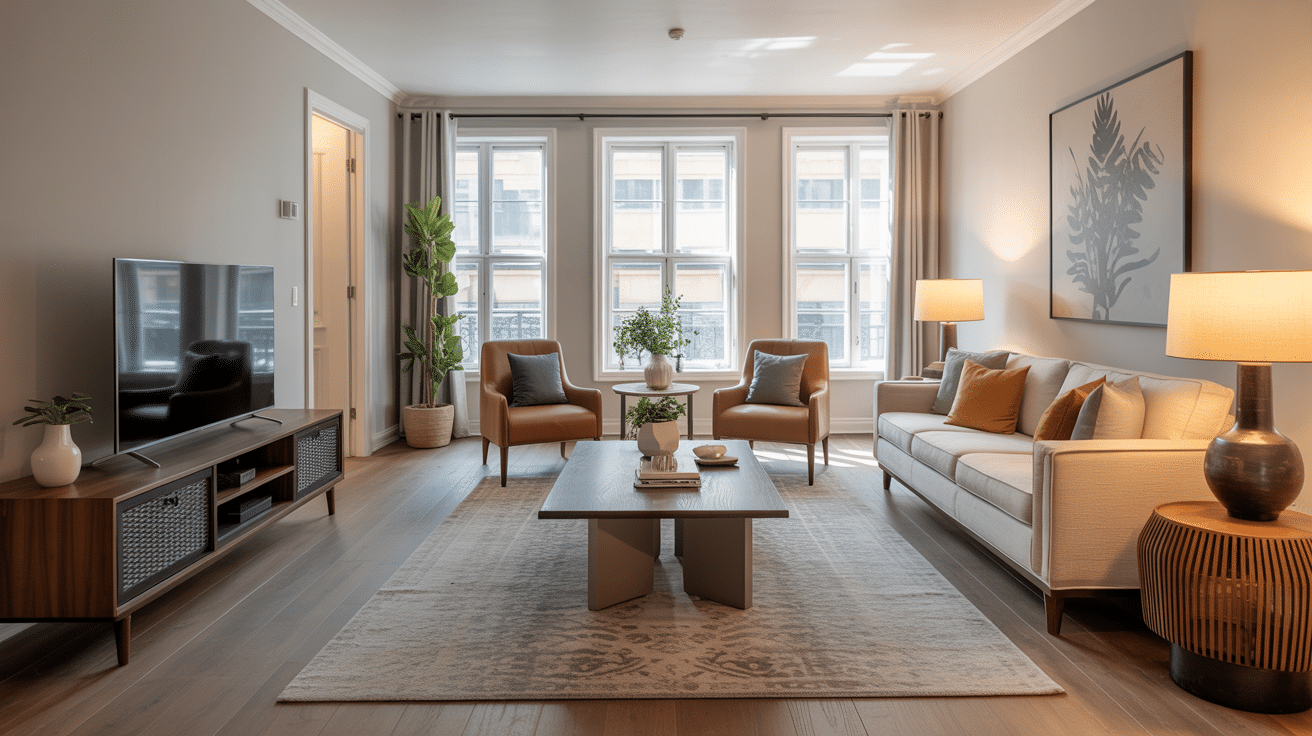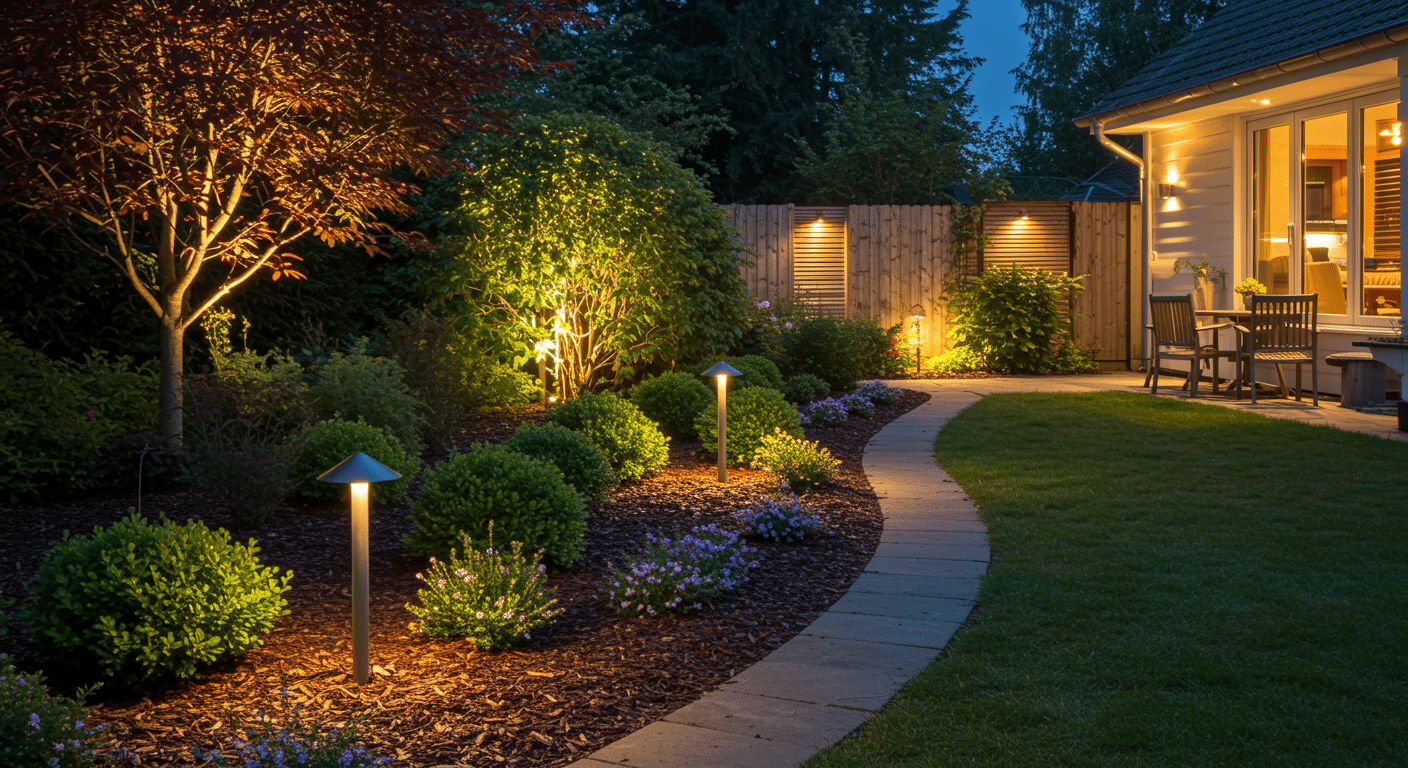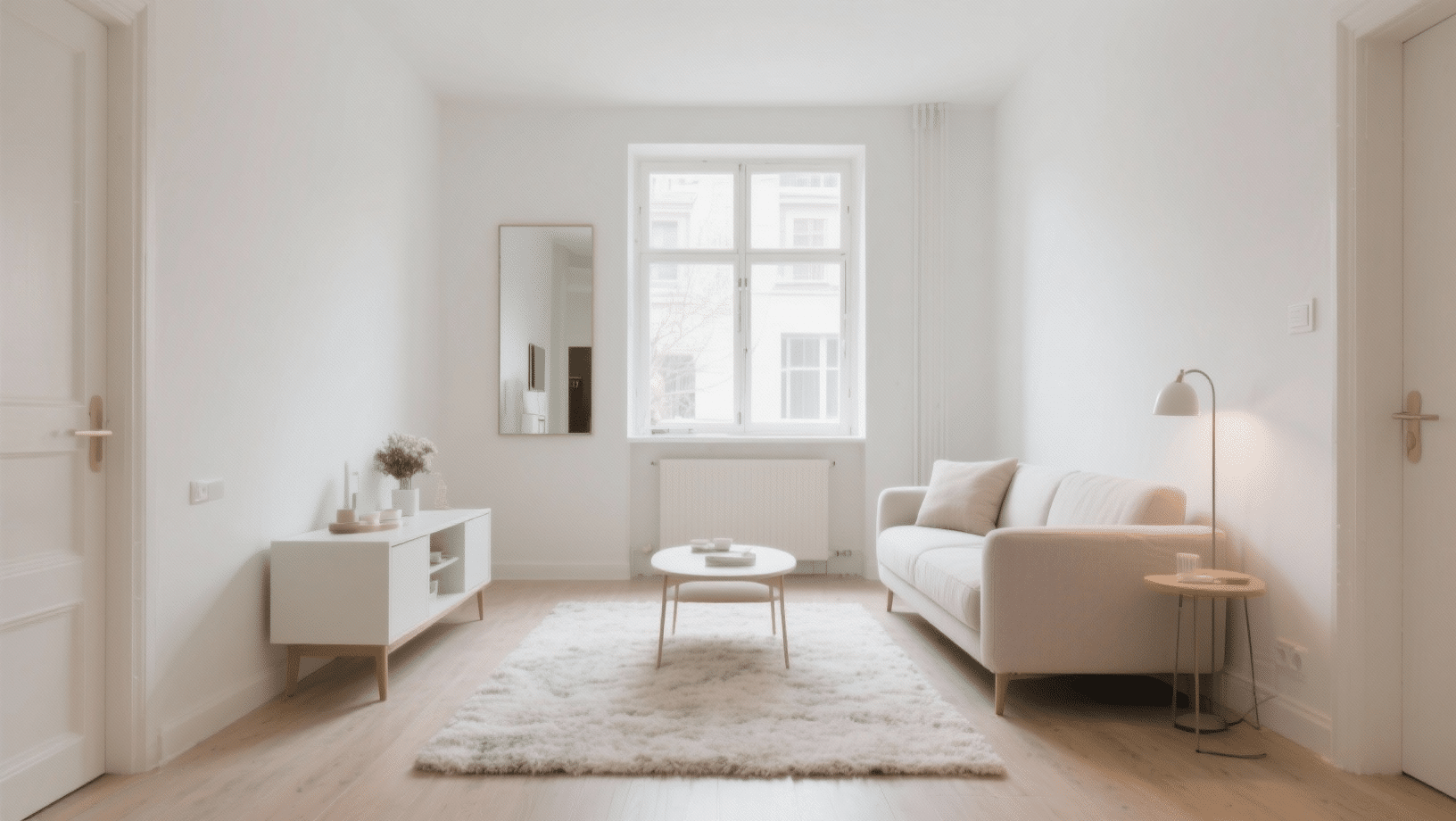I’ll be honest, I used to think all countertops were basically the same until I helped my sister renovate her kitchen last year.
One trip to the showroom and suddenly I’m staring at dozens of materials I’d never heard of, each with price tags that made my wallet weep.
Sound familiar?
So let me save you some time and share what I’ve learned, what is the best countertop material, the good, the bad, and the surprisingly affordable options that might just change your mind.
Why Your Countertop Material Choice Really Matters?
Your countertop choice shapes your entire kitchen experience. The material you select affects how your space looks and feels every single day.
Kitchen design starts with surfaces that catch the eye first. Countertops create the foundation for your color scheme and style. Natural stone brings warmth and character. Quartz offers clean lines and consistent patterns.
Daily cooking puts countertops to the test. Some materials handle heat better than others.
Certain surfaces resist stains and scratches more effectively. The right choice means less time cleaning and more time enjoying your kitchen. Busy families need surfaces that can handle spills, hot pots, and constant use without showing wear.
Smart countertop choices pay off when selling your home. Buyers notice quality materials immediately. Updated surfaces can increase your home’s market value significantly.
The material you choose today affects your kitchen’s function, beauty, and worth for years to come.
What to Look for in a Kitchen Countertop Material?
Selecting the right countertop requires balancing multiple factors that affect your daily life. Your cooking style, budget, and long-term goals all play important roles in this decision.
Smart planning now prevents costly mistakes later. Consider these key elements before making your final choice:
- Durability: Look for materials that resist scratches from knives and cutting boards. Heat resistance matters for hot pots and pans. Stain resistance keeps surfaces looking fresh despite spills and daily use.
- Maintenance: Some materials need regular sealing to prevent damage. Others require special cleaners or professional care. Factor in the time and cost of upkeep when comparing options.
- Cost & Installation: Material prices vary widely from budget-friendly to luxury ranges. Installation complexity affects labor costs. Remember to include both material and installation in your total budget.
- Style Versatility: Consider color options that match your current design or future changes. Texture and pattern choices should complement your cabinets and flooring.
- Sustainability: Recycled materials and renewable resources appeal to environmentally conscious homeowners. Some options have lower carbon footprints than others.
- Lifestyle Suitability: Heavy cooking requires different surfaces than light food prep. Large families need materials that handle constant activity and potential damage.
What is the Best Countertop Material Pick?
I’ve often wondered, what is the best countertop material for everyday use and it really depends on your kitchen habits.
Here’s what I learned about the top countertop materials to help you pick the right one:
1. Granite
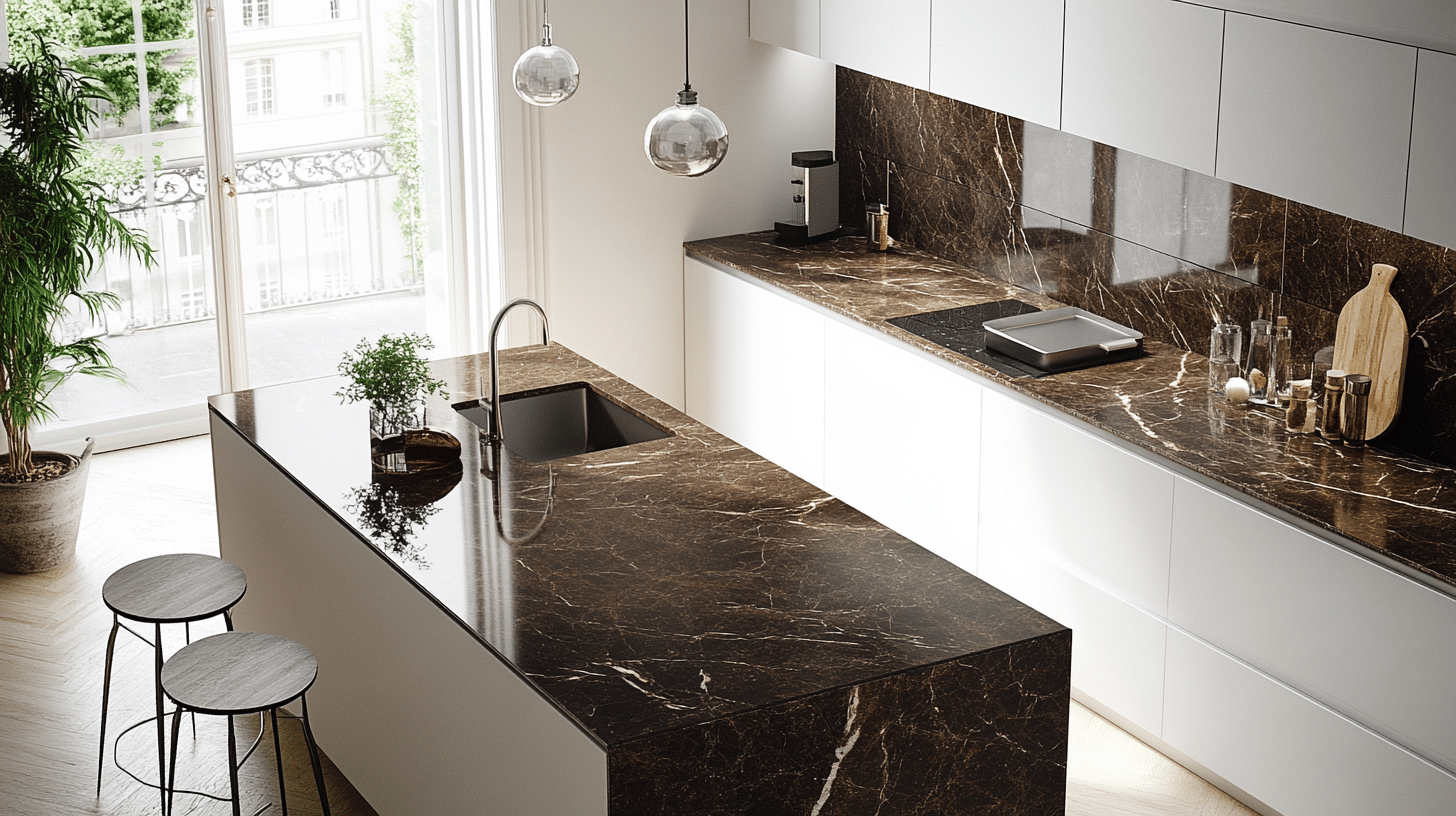
Granite is a classic natural stone prized for its exceptional durability and unique, natural patterns. It withstands heat and scratches well, making it a popular choice for busy kitchens.
However, it requires periodic sealing to maintain its appearance and prevent stains.
| Feature | Granite |
|---|---|
| Pros | Extremely durable, heat and scratch resistant, unique natural patterns |
| Cons | Needs periodic sealing, can be expensive |
| Cost (per sq. ft.) | $40–$100 |
| Aesthetic | Natural stone with earthy patterns and rich texture for a bold, organic look |
| Care Tip | Seal your surface once a year to protect against stains and maintain its shine. |
2. Quartz
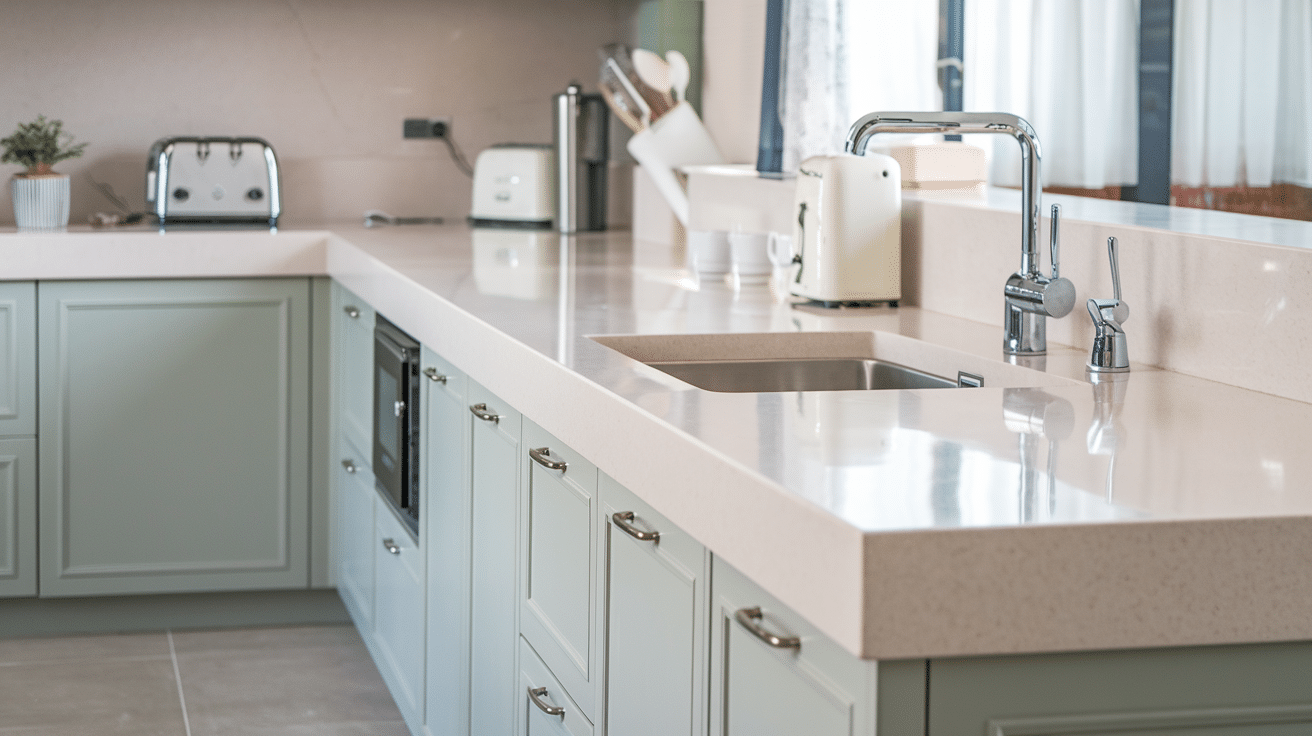
Quartz is an engineered surface composed of natural quartz particles combined with resins, providing a non-porous, low-maintenance countertop option.
It comes in a wide variety of colors and patterns and is highly durable, although it is less heat-resistant than natural stone and is not suitable for outdoor use.
| Feature | Quartz |
|---|---|
| Pros | Non-porous, low maintenance, highly durable, wide color range |
| Cons | Less heat resistant than stone, not suitable for outdoor use |
| Cost (per sq. ft.) | $50–$120 |
| Aesthetic | Sleek and consistent surface with a modern, low-maintenance appeal |
| Care Tip | Wipe with a soft cloth and avoid placing hot pans directly on the surface. |
3. Marble
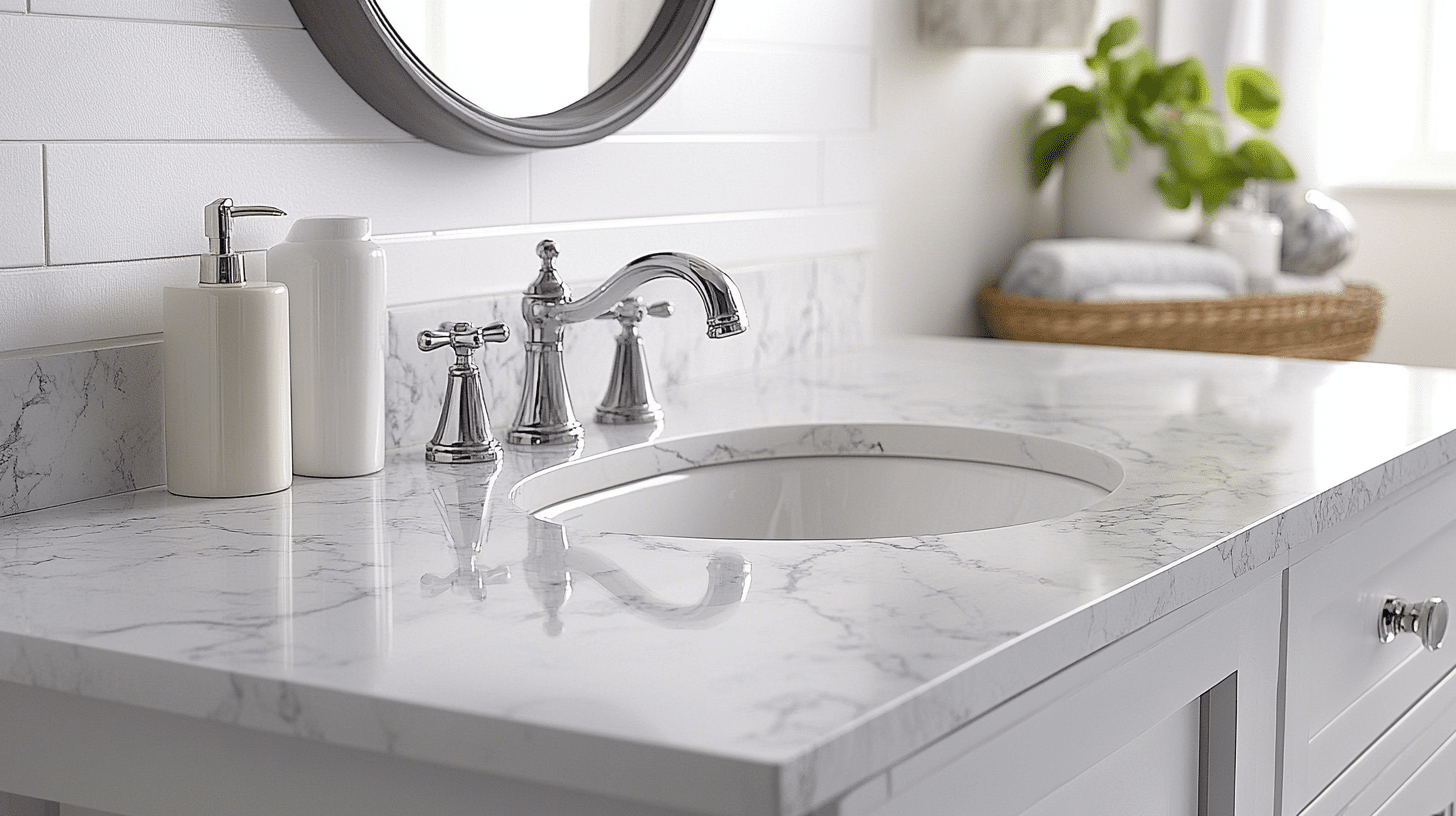
Marble is a luxurious natural stone known for its refined veining and cool surface, ideal for baking enthusiasts. Despite its beauty, it is prone to scratching and staining and requires regular sealing to maintain its look.
| Feature | Marble |
|---|---|
| Pros | Luxurious appearance, unique veining, cool surface for baking |
| Cons | Prone to scratching and staining, requires sealing |
| Cost (per sq. ft.) | $40–$100 |
| Aesthetic | Classic luxury with soft veining and a timeless appearance |
| Care Tip | Use a pH-neutral cleaner and reseal regularly to protect from stains. |
4. Quartzite
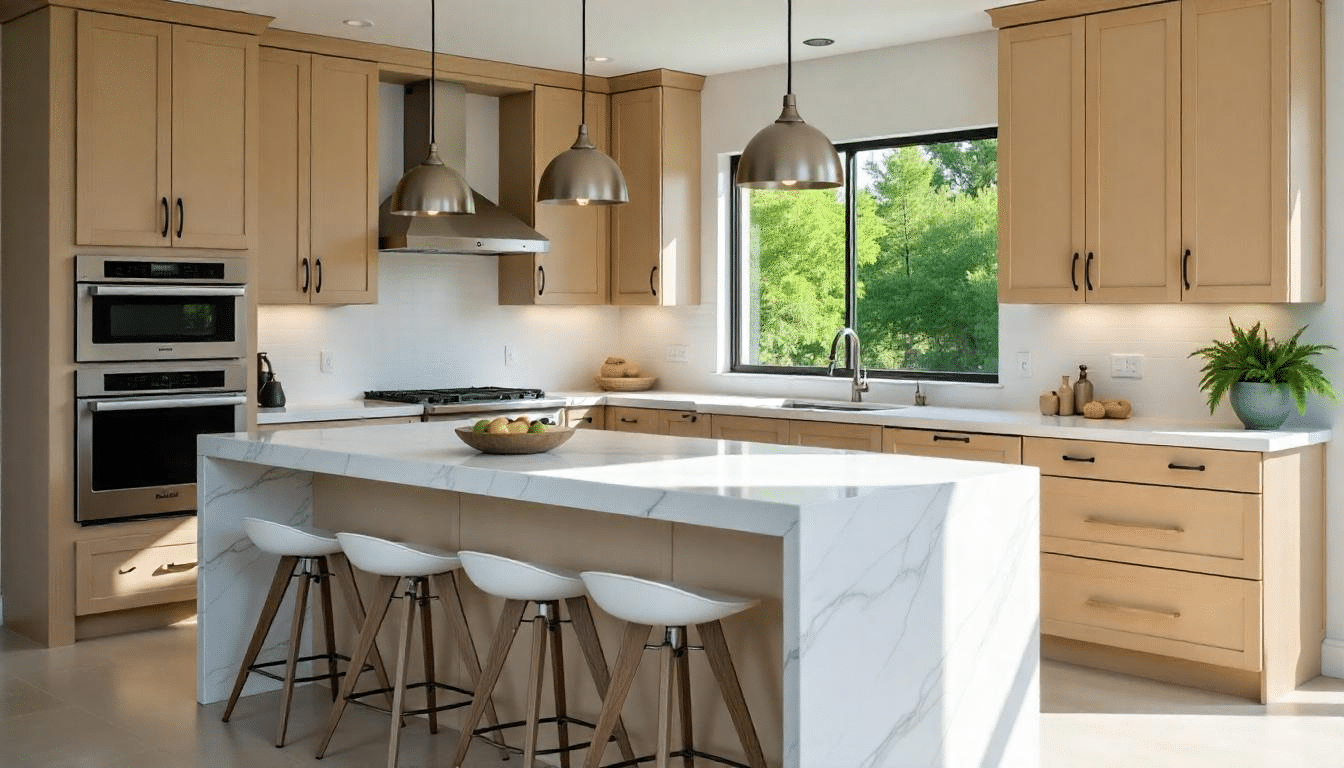
Quartzite is a natural stone that combines the beauty of marble with the strength of granite. It is extremely hard, heat- and scratch-resistant, making it an excellent choice for kitchens. However, like granite, it requires periodic sealing to protect its surface.
| Feature | Quartzite |
|---|---|
| Pros | Extremely hard, natural look, heat and scratch resistant |
| Cons | Needs sealing, can be costly |
| Cost (per sq. ft.) | $60–$120 |
| Aesthetic | Bright and natural with marble-like beauty and rugged strength |
| Care Tip | Reseal annually to preserve resistance against etching and moisture. |
5. Porcelain
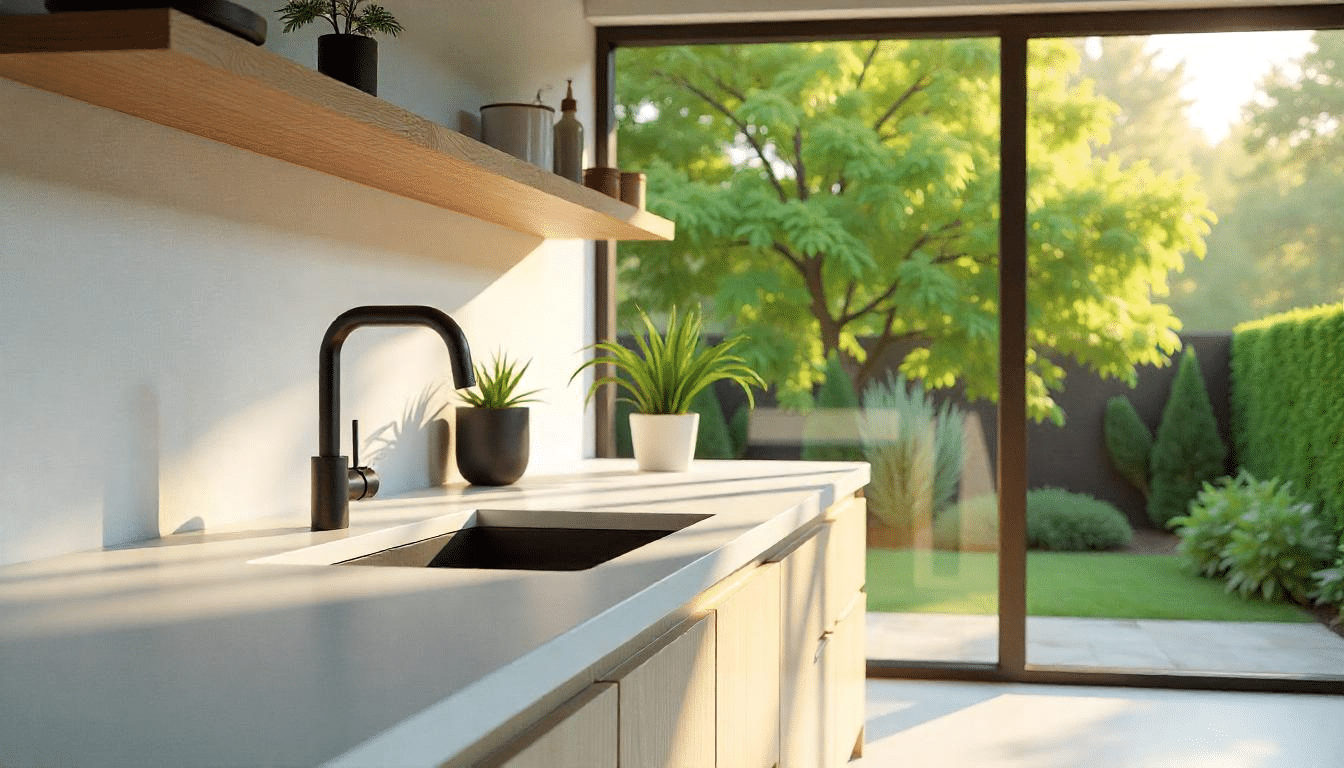
Porcelain countertops are manufactured using dense clay and minerals, fired at high temperatures to create a highly durable surface.
They mimic natural stone and resist heat, stains, and scratches well, though edges may chip, and thickness options are limited.
| Feature | Porcelain |
|---|---|
| Pros | Highly durable, heat and stain resistant, mimics natural stone |
| Cons | Edges can chip, limited thickness options |
| Cost (per sq. ft.) | $55–$120 |
| Aesthetic | Clean, contemporary style with smooth finishes and subtle patterns |
| Care Tip | Clean with a soft cloth and avoid dropping heavy objects on the edges. |
6. Sintered Stone
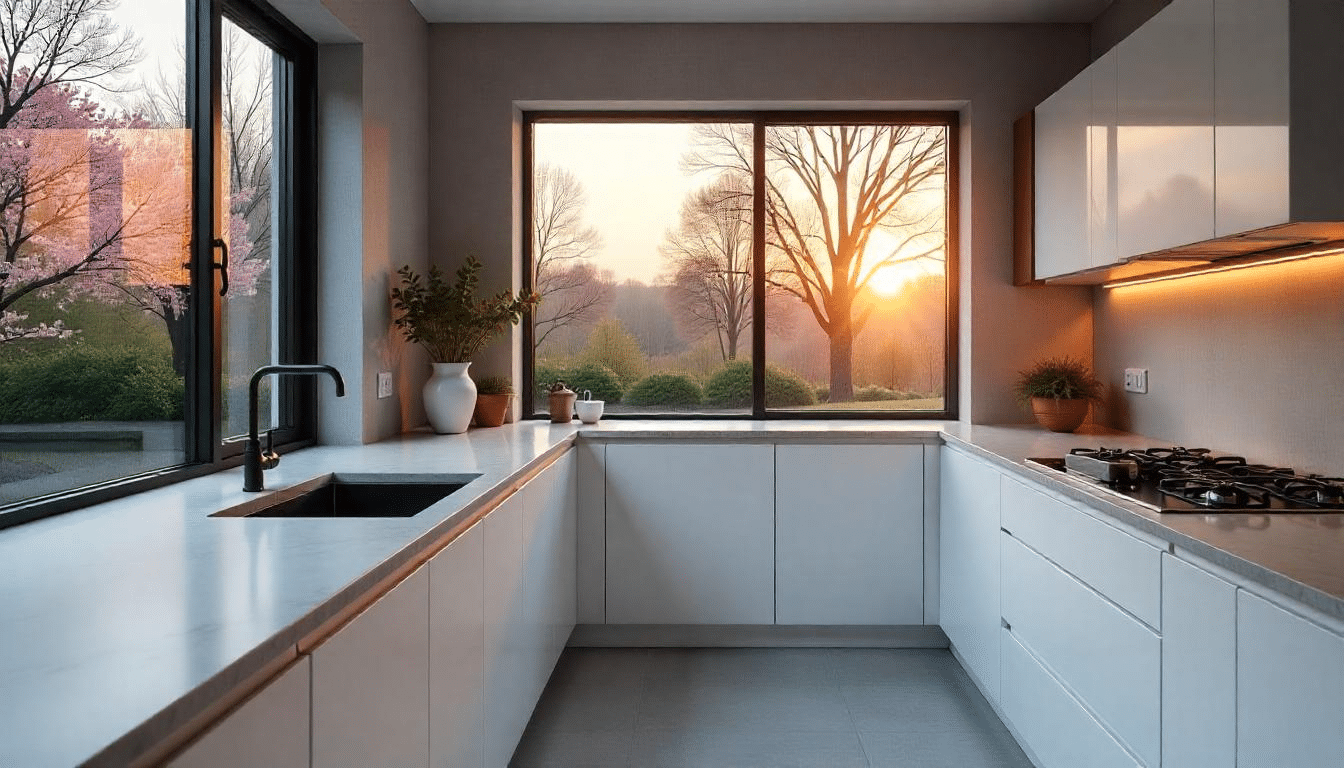
Sintered stone is an innovative engineered material made by compacting natural minerals at extreme heat and pressure. It is a premium option with a sleek, seamless appearance.
| Feature | Sintered Stone |
|---|---|
| Pros | Ultra-durable, heat, stain, and scratch resistant, low maintenance |
| Cons | Higher cost, limited availability |
| Cost (per sq. ft.) | $70–$150 |
| Aesthetic | Minimalist and ultra-modern with seamless, high-end visual appeal |
| Care Tip | Wipe down with water and mild soap, no sealing required. |
7. Soapstone
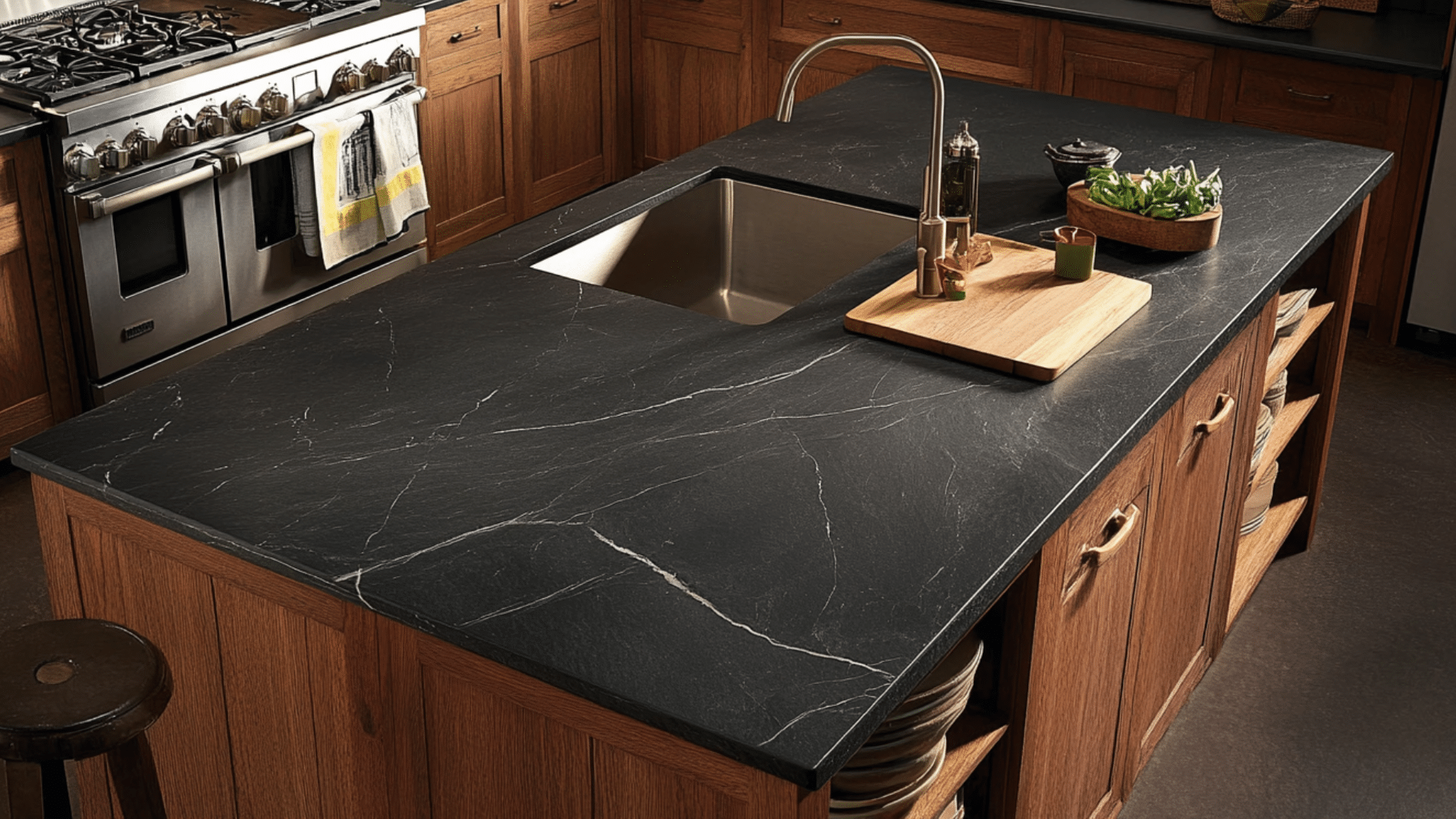
Soapstone is a natural, soft stone with a smooth, matte finish that develops a unique patina over time.
It is heat resistant and non-porous, but can scratch and dent more easily than harder stones. Regular maintenance is required to keep its appearance.
| Feature | Soapstone |
|---|---|
| Pros | Non-porous, heat resistant, develops a unique patina |
| Cons | Softer, can scratch or dent, limited color options |
| Cost (per sq. ft.) | $70–$120 |
| Aesthetic | Soft, matte surface with a vintage, lived-in charm |
| Care Tip | Apply mineral oil to enhance patina and cover surface blemishes. |
8. Slate
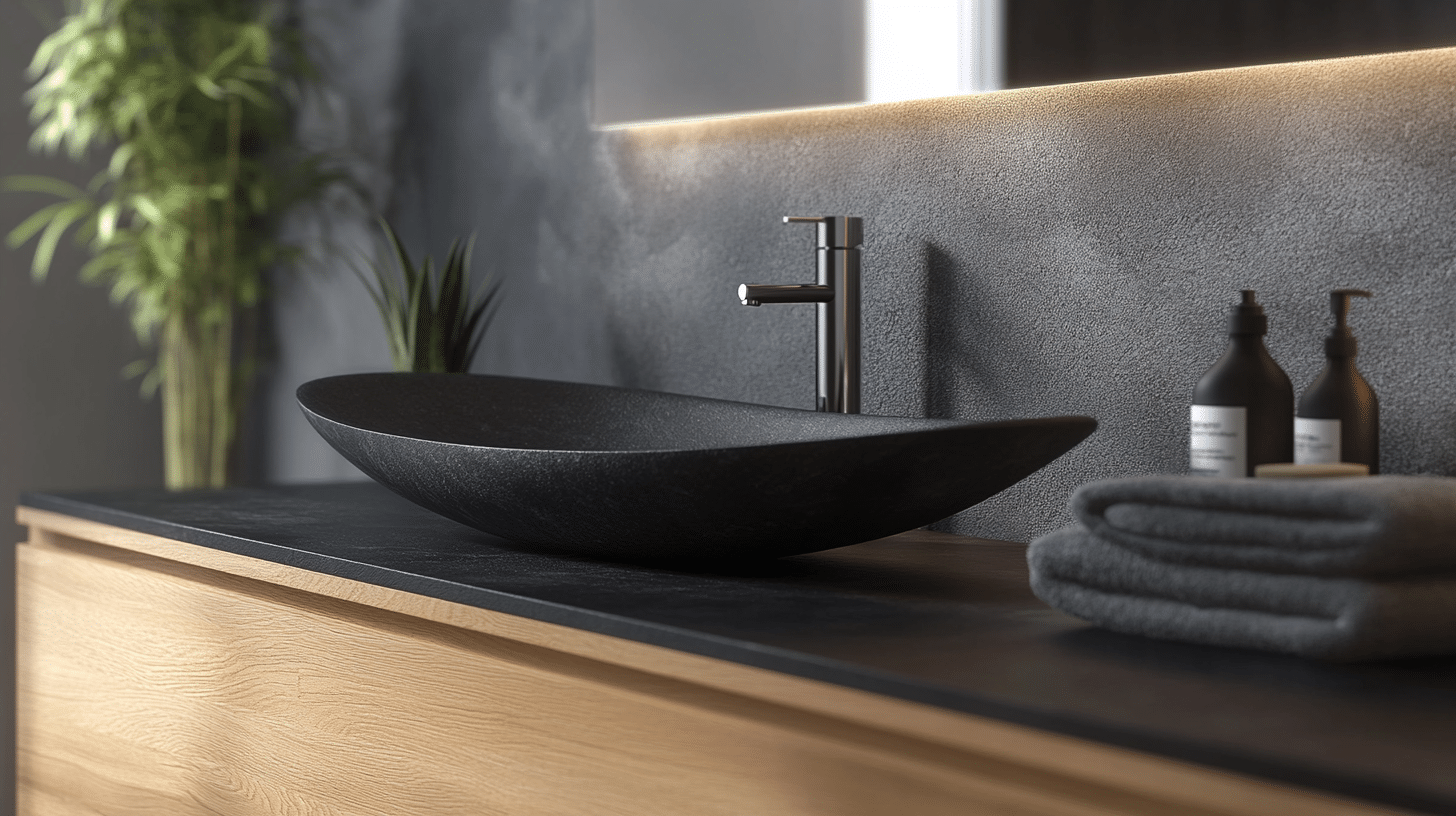
Slate is a dense, fine-grained natural stone characterized by its sleek, dark appearance. It is stain-resistant and naturally antibacterial, making it a practical choice. However, it can chip on edges and offers a limited color palette.
| Feature | Slate |
|---|---|
| Pros | Stain-resistant, antibacterial, affordable natural stone |
| Cons | Can chip at edges, limited color palette |
| Cost (per sq. ft.) | $50–$100 |
| Aesthetic | Dark, understated stone with a refined, minimalist aesthetic |
| Care Tip | Wipe regularly with a damp cloth and avoid harsh, acidic cleaners. |
9. Limestone
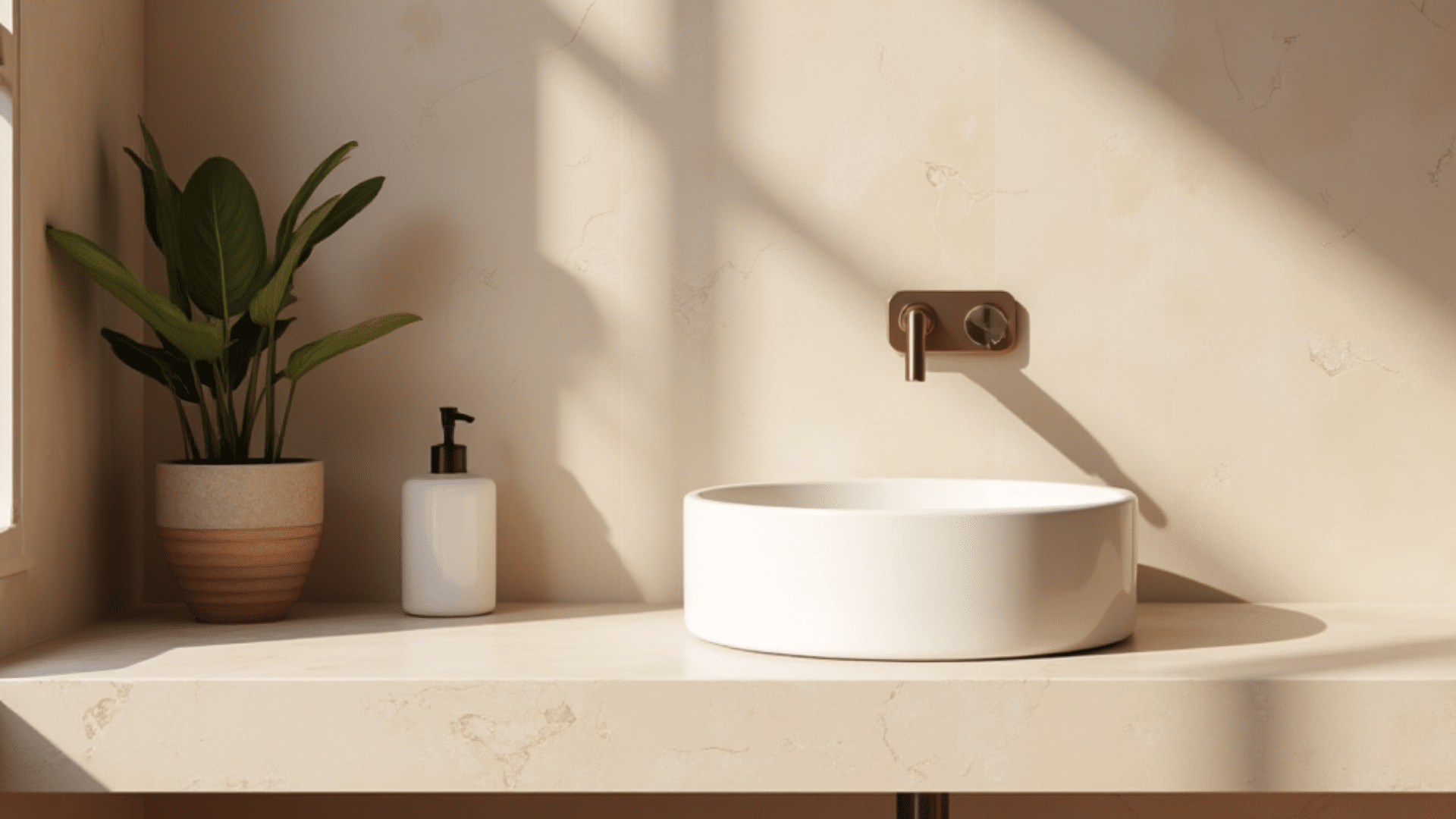
Limestone offers a soft, warm aesthetic with natural earth tones. It is more porous and softer than other stones, so it scratches and stains easily and requires sealing and careful maintenance.
| Feature | Limestone |
|---|---|
| Pros | Soft, warm appearance, affordable natural stone |
| Cons | Prone to scratching and staining, needs sealing |
| Cost (per sq. ft.) | $50–$100 |
| Aesthetic | Warm and rustic with soft, earthy tones and natural texture |
| Care Tip | Seal frequently and avoid acidic spills to prevent permanent marks. |
10. Butcher Block (Wood)
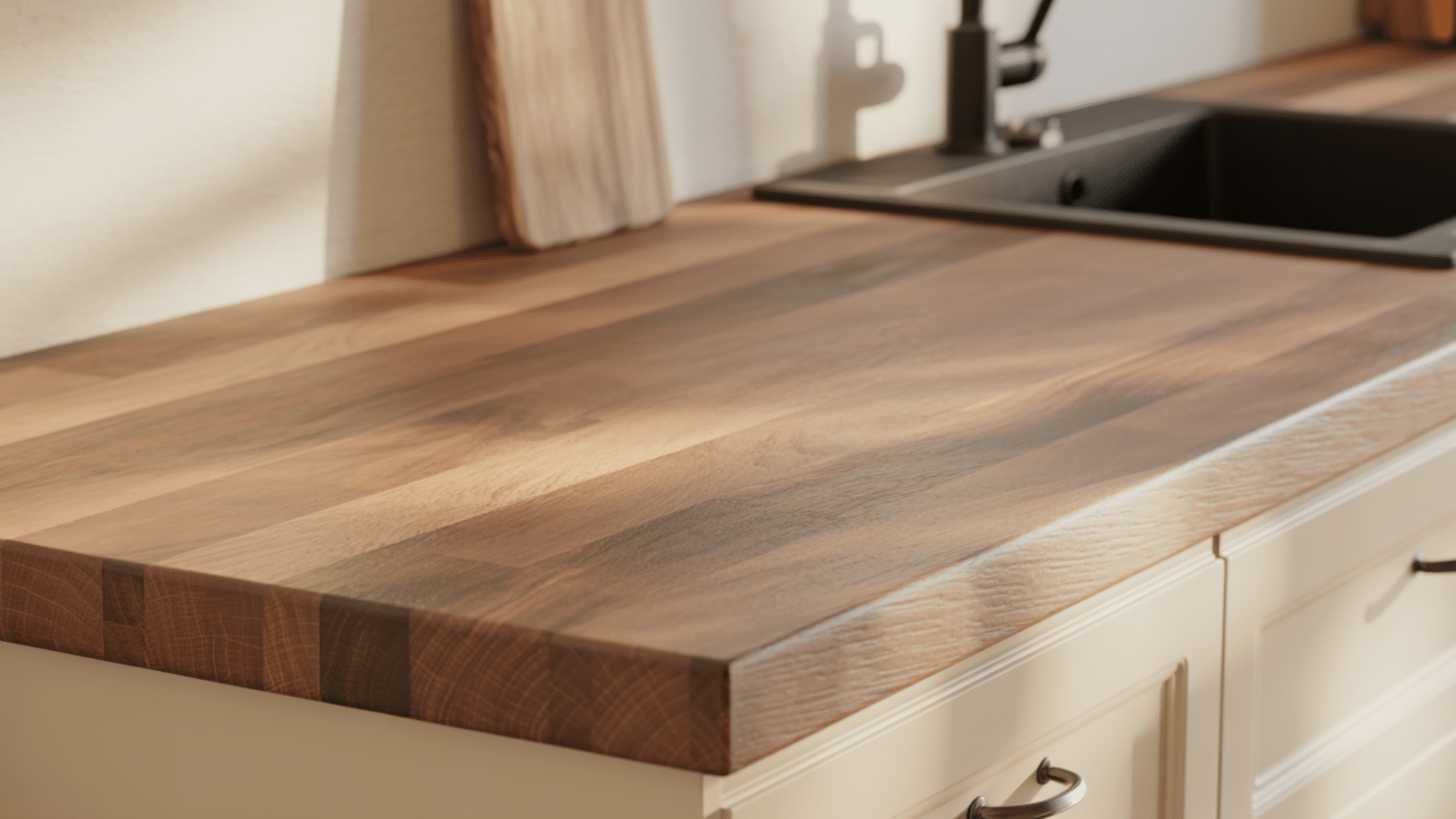
Butcher block countertops provide a warm, rustic look with natural wood grains. They are repairable by sanding but are vulnerable to water damage, scratches, and require regular oiling to maintain their finish.
| Feature | Butcher Block |
|---|---|
| Pros | Warm, rustic look, can be sanded and refinished |
| Cons | Susceptible to scratches and water damage, requires regular oiling |
| Cost (per sq. ft.) | $30–$70 |
| Aesthetic | Cozy and rustic with visible wood grain and natural warmth |
| Care Tip | Apply food-safe mineral oil monthly to prevent drying and cracking. |
11. Stainless Steel
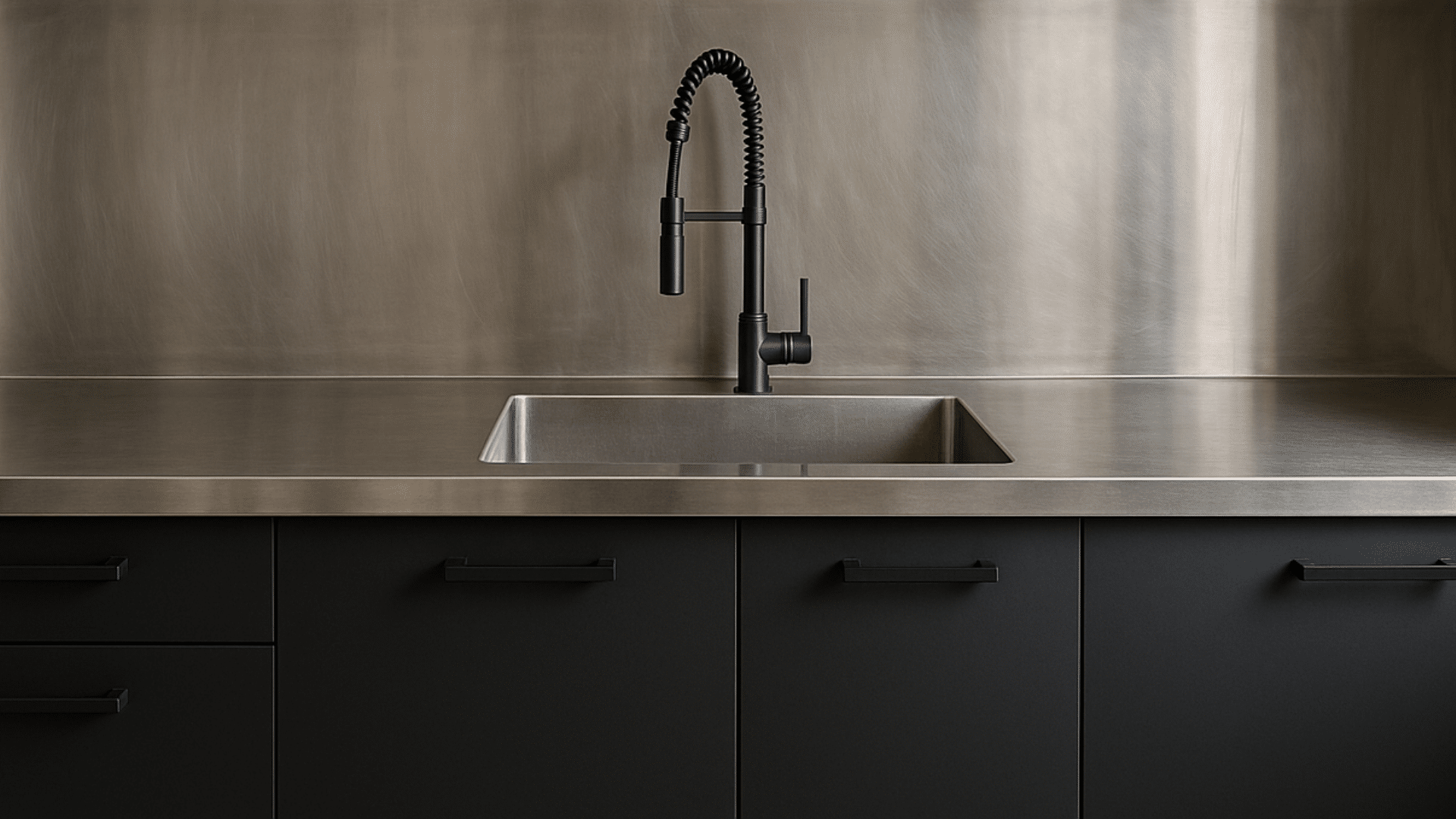
Stainless steel countertops deliver a sleek, industrial look and are highly resistant to heat and stains. They are hygienic but can dent and scratch, and fingerprints show easily, requiring frequent cleaning.
| Feature | Stainless Steel |
|---|---|
| Pros | Industrial look, heat and stain resistant, hygienic |
| Cons | Can scratch and dent, shows fingerprints |
| Cost (per sq. ft.) | $80–$220 |
| Aesthetic | Sleek and industrial with a polished, professional finish |
| Care Tip | Use a stainless steel cleaner to remove fingerprints and water spots. |
12. Concrete
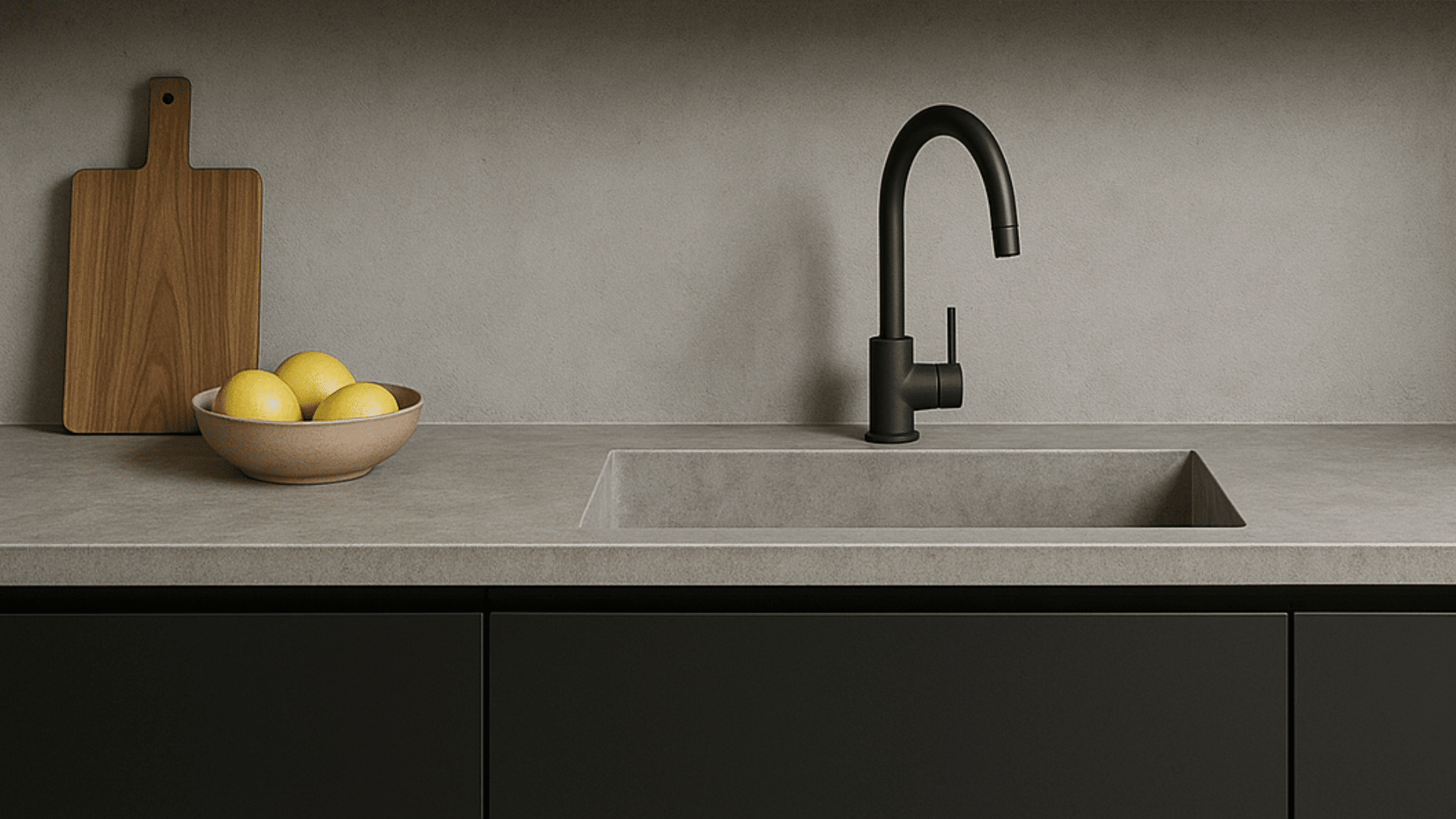
Concrete countertops offer customizable shapes and finishes, including embedding decorative materials. They suit industrial or modern designs but are heavy, can crack, and require sealing.
| Feature | Concrete |
|---|---|
| Pros | Customizable shapes, industrial style, can embed materials |
| Cons | Can crack, needs sealing, heavy |
| Cost (per sq. ft.) | $65–$135 |
| Aesthetic | Raw and modern with customizable forms and an edgy, matte feel |
| Care Tip | Seal annually and clean with pH-neutral products to prevent staining. |
13. Tile (Ceramic/Porcelain)
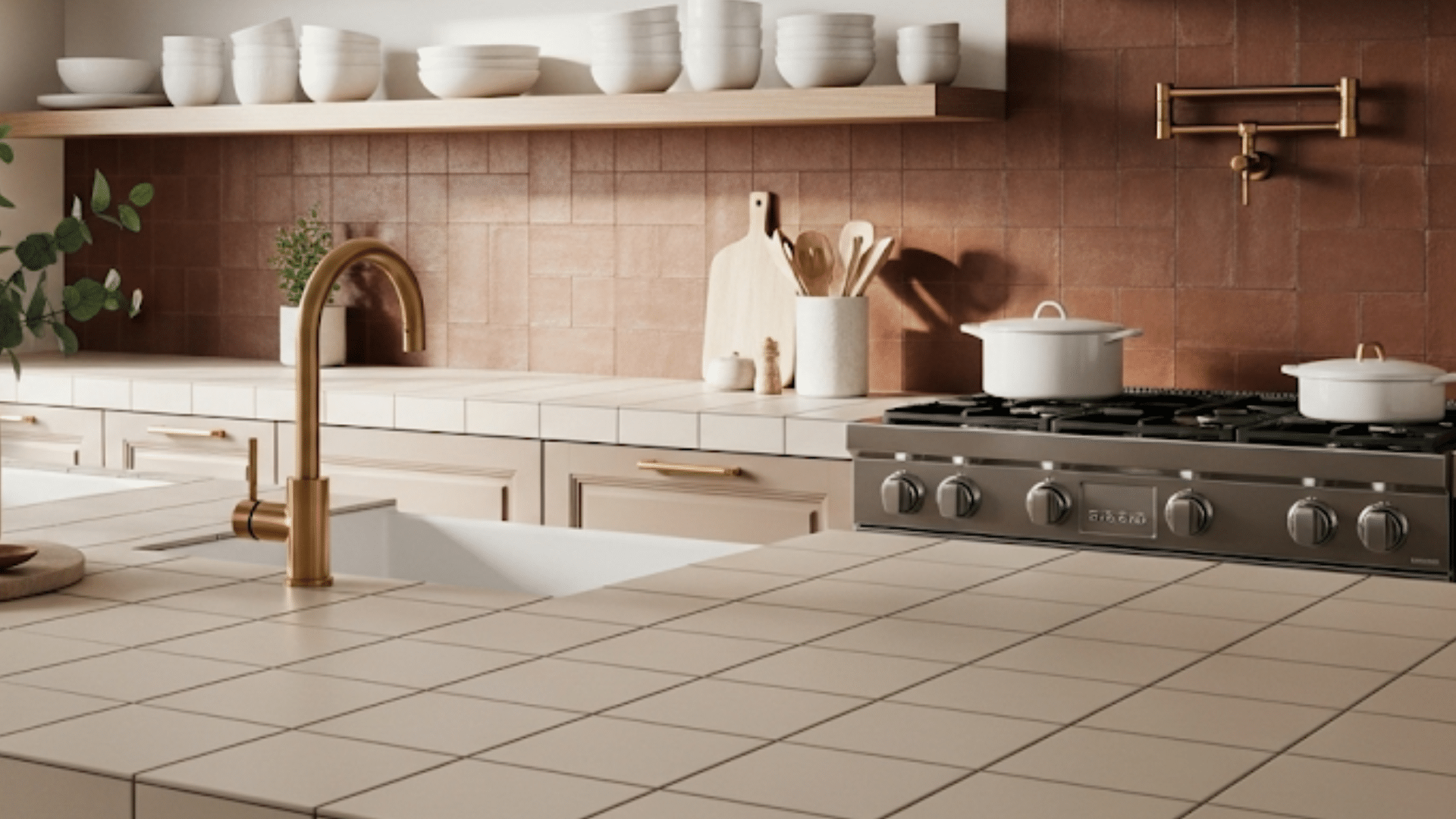
Tile countertops are budget-friendly with endless design possibilities. Individual tiles can be replaced easily, but grout lines require regular cleaning to prevent staining, and the surface can feel uneven.
| Feature | Tile (Ceramic/Porcelain) |
|---|---|
| Pros | Affordable, endless design options, easy to replace damaged sections |
| Cons | Grout can stain, uneven surface |
| Cost (per sq. ft.) | $10–$80 |
| Aesthetic | Eclectic and customizable with endless color and pattern options |
| Care Tip | Use grout sealer and clean regularly to prevent dirt buildup. |
14. Terrazzo
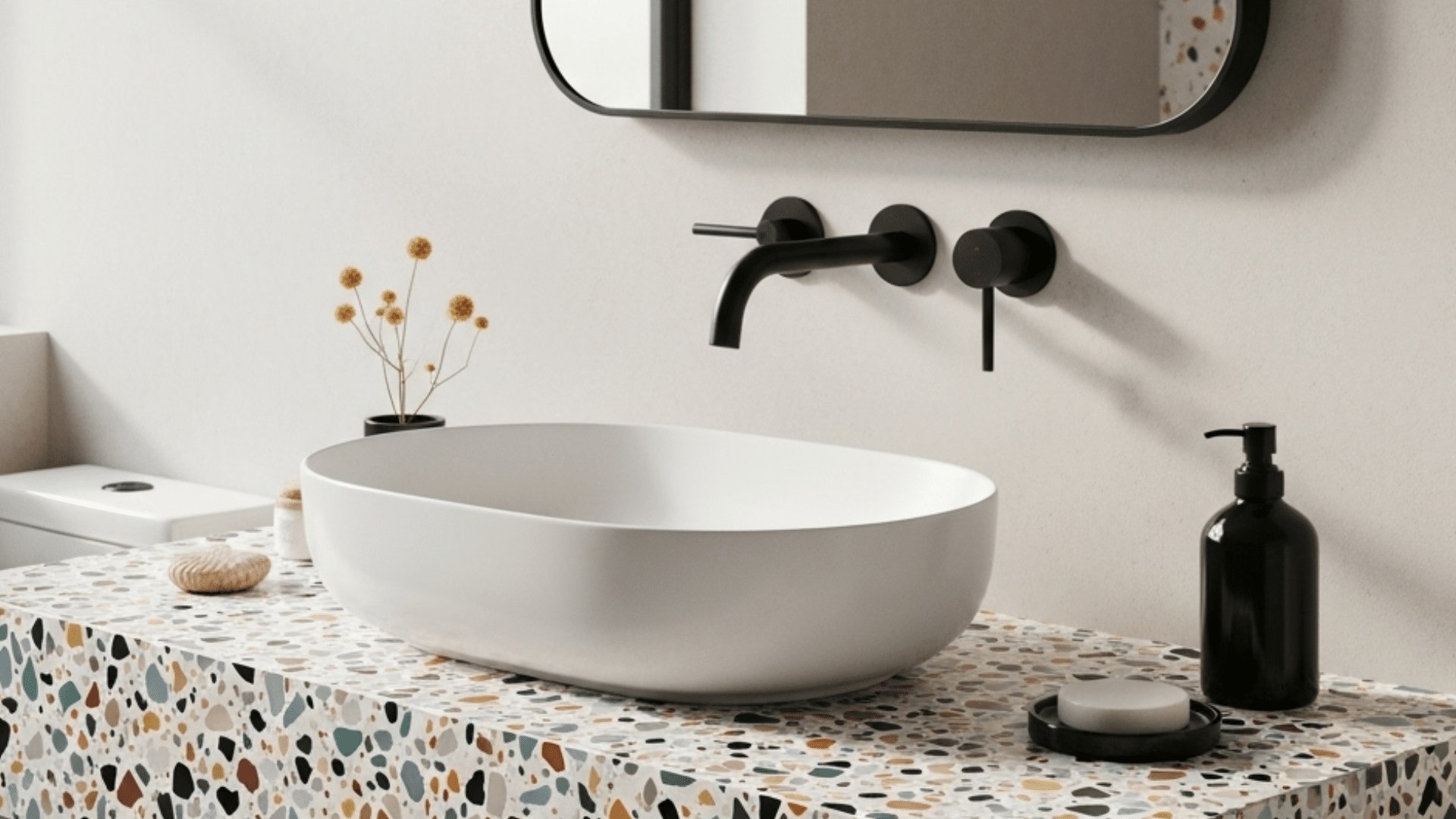
Terrazzo is a composite material composed of chips of marble, glass, or stone set in a concrete or resin matrix. It offers vibrant colors, durability, and is eco-friendly. It needs sealing and can be pricey.
| Feature | Terrazzo |
|---|---|
| Pros | Unique, colorful, durable, eco-friendly |
| Cons | Can be expensive, needs sealing |
| Cost (per sq. ft.) | $50–$100 |
| Aesthetic | Colorful and artistic with a playful, speckled surface |
| Care Tip | Reseal every 1–2 years and use neutral cleaners to preserve the finish. |
15. Recycled Glass
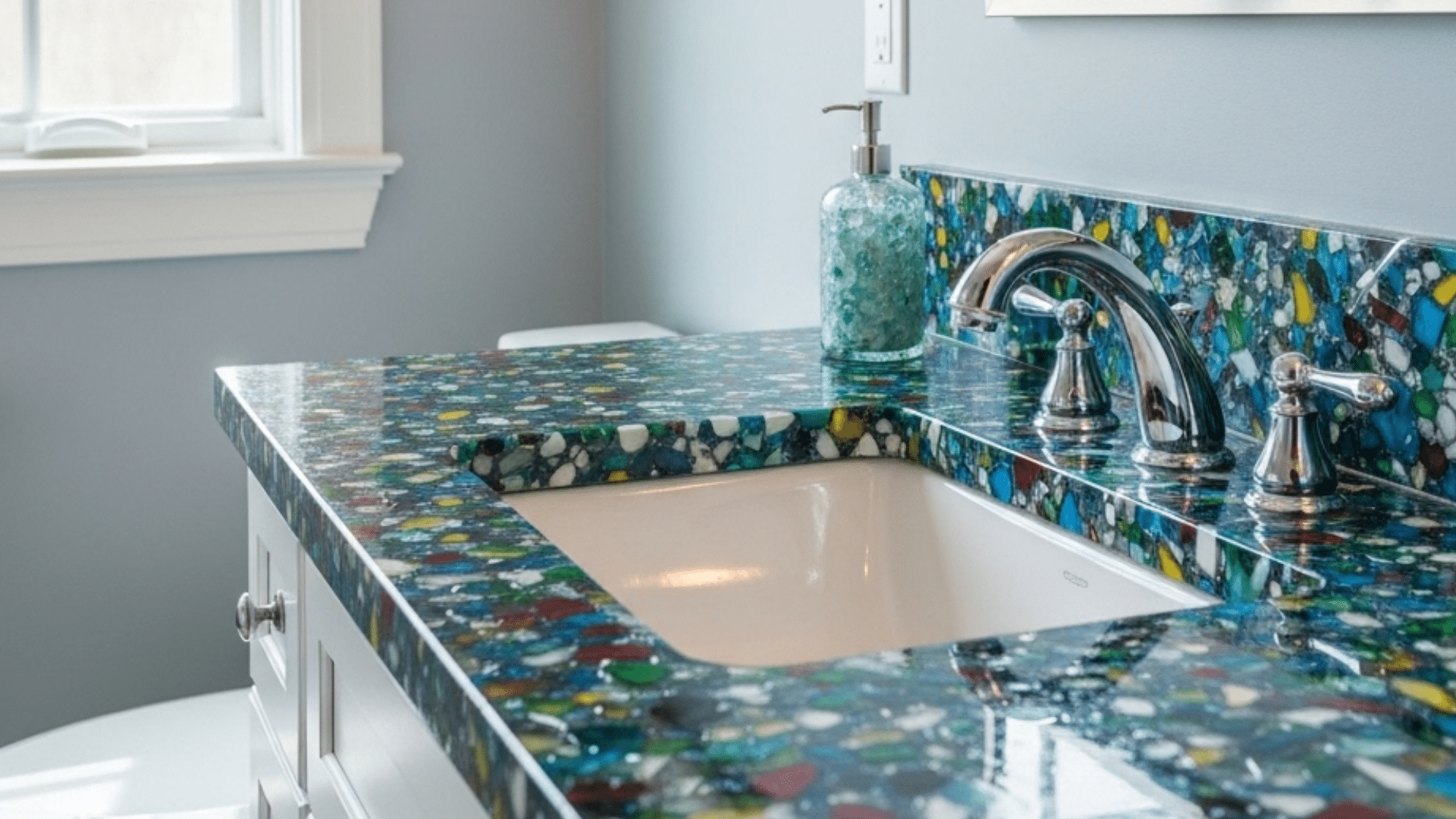
Recycled glass countertops are made from crushed glass embedded in resin or concrete, providing vibrant, unique patterns. They are eco-friendly but can chip and have visible seams.
| Feature | Recycled Glass |
|---|---|
| Pros | Eco-friendly, vibrant colors, unique patterns |
| Cons | Can chip, visible seams |
| Cost (per sq. ft.) | $50–$100 |
| Aesthetic | Bright and eco-conscious with eye-catching, one-of-a-kind designs |
| Care Tip | Avoid dropping heavy items to prevent chipping. |
Conclusion
After comparing all the top countertop materials, I can tell you there’s no universal winner. Your best choice depends entirely on your specific needs, budget, and lifestyle.
The key is matching material strengths to your real kitchen habits.
Do you cook often? Need low maintenance? Want natural patterns? Your honest answers will guide you to the right surface.
Take time to visit showrooms, compare samples, and get multiple quotes before committing.
I’d love to hear which material caught your attention! Share your thoughts in the comments below.
If you’ve recently chosen new countertops, tell me about your experience, your insights could help other readers make their decision.


